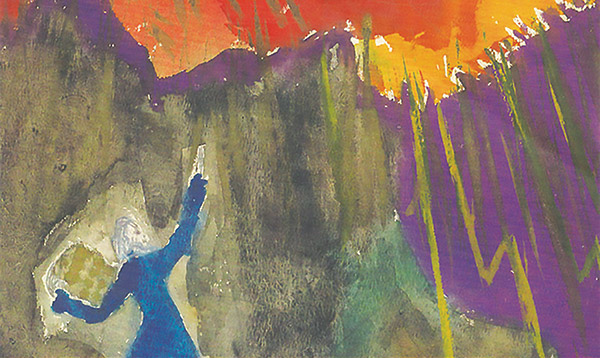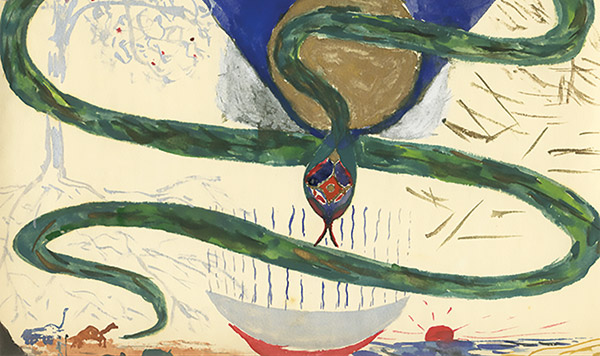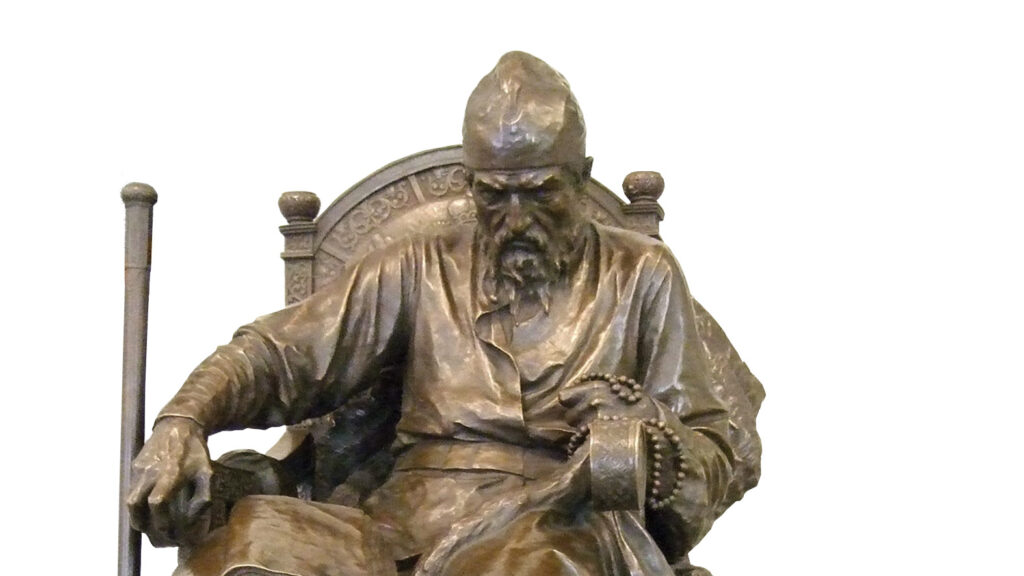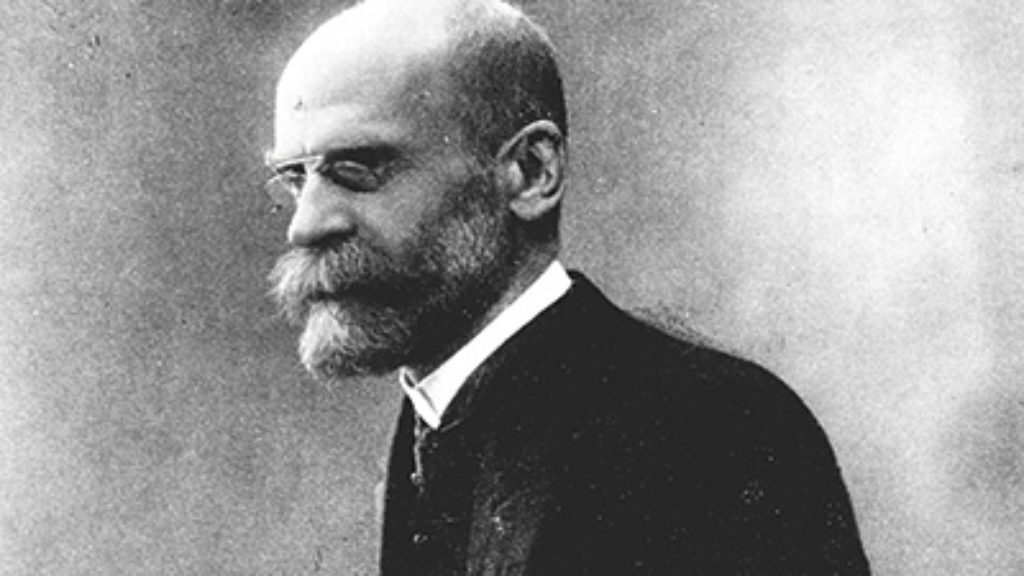Hasidism, Jung, and the Jewish Spiritual Crisis
“You will be my Zaddik,” exclaimed Erich Neumann in a 1934 letter to Carl Gustav Jung from his new home in Tel Aviv. In 1933, Neumann and his wife, Julie, had left Berlin with their one-year-old child after the new anti-Jewish laws prevented him from beginning a medical internship. On the way to Mandatory Palestine, the family stopped in Switzerland, where Neumann remained for eight months to train under Jung, sending his wife and son on to Palestine ahead of him. Jung admired the young man’s independence and brilliance and, at least for a time, even talked of him as his successor.
It was during these months, Ann Conrad Lammers tells us in her biographical introduction to the first volume, that Neumann first began to work out the conception of The Roots of Jewish Consciousness, a book that he worked on from the rise of Hitler and throughout World War II but never published. For several years, with Jung’s encouragement, Neumann sent his tzaddik detailed letters that grappled with new notions of the Jewish psyche, the problem of revelation, and the psychological relevance of Hasidism for the modern Jew. But then, for reasons that remain somewhat unclear, Neumann aborted his Jewish endeavors, later declaring enigmatically to friends that Roots was “unpublishable” and a “silent book.” Eight decades later, Lammers and fellow translator Mark Kyburz, working in collaboration with a devoted pair of Jungian analysts, Nancy Swift Furlotti in the United States and Erel Shalit in Israel, have brought out both volumes of Roots in a meticulous English translation of the original German manuscripts. A Hebrew translation is forthcoming in 2022.
In the 1940s and 1950s, Neumann achieved renown as a philosopher of Jungian depth psychology on the strength of two seminal works, The Origins and History of Consciousness and The Great Mother. Following Jung’s retirement, he also became one of the leading lights at the Eranos conferences, which were attended by prominent scholars of religion, including the Romanian theorist Mircea Eliade, the Islamicist Henry Corbin, and Gershom Scholem. But the fruits of his earlier Jewish scholarship—the two volumes of The Roots of Jewish Consciousness and a shorter monograph called Jacob and Esau: On the Collective Symbolism of the Brother Motif—remained below the horizon, read only by a select group of colleagues and friends. Nor did Neumann, who died at age 55 in Tel Aviv, ever realize his ambition to write a third and final volume, which would diagnose the spiritual crisis of modern Jewry.
“Spiritual crisis,” as understood by Neumann, required first and foremost a return to the ethos of Hasidism, which Neumann knew largely, though not entirely, from the writings of Martin Buber. Neumann was inspired by Buber’s retelling of Hasidic stories and his romantic vision of a Jewish cultural renaissance. As early as 1907, in The Legend of the Baal Shem, Buber declared that “Hasidic teaching is the proclamation of rebirth. No renewal of Judaism is possible that does not bear in itself the elements of Hasidism.” Neumann agreed and insisted that he would follow Buber in interpreting only those particular Hasidic teachings that are “meaningful in the history of development, that is, that a future Judaism will, and must, refer to,” though, unlike Buber, he had no access to the primary sources and had to rely on the selection of scholars and popularizers like Buber and Samuel Horodetzky.

In a brilliant introduction to the second volume of The Roots of Jewish Consciousness, Moshe Idel describes Neumann’s distinctive approach to reading Hasidic texts as a Jungian version of Buber’s “this-worldly” approach. Idel notes that already in Hasidism itself, “one can discern a propensity to interpret biblical and Kabbalistic topics, figures and values as referring to inner human powers and processes,” which lends itself to Neumann’s call for “an introverted type of Judaism.” Thus, the ubiquitous prince in Hasidic homilies, who is banished from the royal palace, represents, for Neumann, an alienated ego, assimilated into the surrounding culture, oblivious to any possible connection to the numinous source of being.
Neumann first spelled out his approach to a hoped-for Jewish renaissance rooted in Jungian psychology in a book review published in 1934 in the Jüdische Rundschau, the journal of the Zionist Federation of Germany. Jung had come under a barrage of fire for his views on racial psychology that seemed to imply tacit support, if not outright admiration, for National Socialism. To mollify his critics, he had invited a prominent Jewish educator, Hugo Rosenthal, to contribute an article on the psychology of Jacob and Esau to a new anthology of Jungian thought. Neumann wrote a favorable review of Rosenthal’s article, concluding that the application of analytical psychology to theology could make “a decisive contribution to the re-rooting of the Jew in Judaism.” This review would lead to his book Jacob and Esau, which, like the Roots volumes, was not published until more than a half-century after Neumann died, in 2015.
For Neumann, “re-rooting” the Jew in Judaism required a journey on the path of individuation, that lifelong process whereby an individual seeks to attain the “innermost, final, incomparable uniqueness of becoming one’s own Self.” One of the crucial phases in this process entails the integration of the unconscious “shadow,” which, according to Jung, was the repository of those unlived parts of our personalities that still languish in darkness. In Jacob and Esau, Neumann suggests that Esau represents “the dark, shadow side which belongs to consciousness as night does to the day.” The dramatic nighttime battle between the twins is an allegory for the taut relationship between the realms of the conscious and the not-yet-conscious, the resolution of which, however painful, ultimately proves to be a source of divine blessing.
Neumann revisited the theme of the shadow in the course of his provocative analysis of the cataclysmic events at Mount Sinai. Reflecting on the people’s refusal to hear God’s word directly, Neumann argues that this inability to withstand the force of revelation is an enduring archetype of the paradoxical Jewish response to the divine word, which is still alive and well in the psyche of the modern Jew:
Not only the past and the history of the Jews, but also their present and future, or lack of it, are still being decided on Mount Sinai, as the living revelation still meets with acceptance or non-acceptance.
In Neumann’s reading, this collective failure of nerve necessarily led to the innovation of prophecy, a new avenue of divine revelation realized in “Great Individuals” such as Moses and the later biblical prophets through whom cultural transformation was effected. Yet, despite the Jewish nation’s failure, Neumann argues that the frankness of the scriptural account signals the presence of a crucial psychic resource:
The Jewish genius allows its foundational story—the basic revelation, the Sinai event, which turned the people into a people—to begin with its own catastrophic failure. This recurrent trait—the ability not only to look one’s own shadow in the eye, but also to see the dynamics of life playing out in the conflict with that shadow . . . is one of the driving forces of all Jewish existence.
In the second volume of The Roots of Jewish Consciousness, Neumann takes up the kabbalistic concept of adam kadmon, or primal man, as an androgynous archetype:
The aspect of wholeness, which emerges in Judaism with the realization of Adam Kadmon as the Self, also leads, as we saw, to a reconstellation of the problem of masculine and feminine. The creation of wholeness presupposes a realization of the male and female aspect in every human being, which is also a central problem of the individuation process for modern people.
If adam kadmon is internalized as a psychological ideal, it will help lead one away from rationalism toward a kind of feminine (and Hasidic) receptivity, or more precisely, to a balance between active and passive aspects of one’s personality. In a 1955 interview on his eightieth birthday, Jung cryptically said that “the Hasidic Rabbi Baer from Meseritz, whom they called the Great Maggid,” anticipated his entire psychology. In his introduction, Idel takes Jung to have been pointing to the Maggid’s prescient understanding of interplay between the masculine and the feminine, which Jung undoubtedly learned about from Neumann.

Another convergence between Hasidic thought and depth psychology turns on the meaning and purposes of the second half of life. Jung famously said that “we cannot live the afternoon of life according to the program of life’s morning.” The program of the first half of life is necessarily occupied with material concerns—family, possessions, and profession. Only afterward, says Neumann, do transpersonal and religious problems start to become decisive, as “the dimension of the ego and world recedes, and that of spirit and soul come clearly into view.” Neumann links this model of inner growth to the manner in which the three parts of the soul as described by kabbalistic and Hasidic masters—nefesh, ruach, and neshama—gradually unfold in the course of a lifetime.
This diminution of the ego, or more precisely, its “decentering,” was of immense importance to Neumann. He devoted an entire section in Roots to his concept of a new “Copernican revolution” that dethrones the ego from its central position. To illustrate his point, Neumann turns to a story about the Kotsker Rebbe:
The rabbi of Kotzk asked a self-assured youth: “Can you learn?” “Yes,” he replied. “Do you know,” the rabbi then asked, “the meaning of the word Torah?” The youth fell silent. “The meaning of the word Torah,” said Rabbi Mendel, “is: It teaches. But you believe you can learn by yourself—so it hasn’t taught you anything yet.”
Neumann here imagines the Torah as the sun or Jungian Self, while the ego of the prideful learner is the earth. As long as the self-possessed learner experiences himself as an independent agent, he remains insensible to the Torah’s teaching. Only when he is able to humbly open his heart and view himself as the recipient of the warmth of the Torah’s teaching will he truly be able to learn. According to Neumann, this ethos of receptivity to the soul’s ever-present guidance was the new thing that Hasidism brought and still must bring to Judaism.
Neumann wrote out of a conviction that the wisdom of Hasidic teachings and Jungian depth psychology could be combined to offer an extraordinary guide to human interiority, and there is every reason to believe he continued to think so. Why, then, did he choose not to publish The Roots of Jewish Consciousness volumes even in the afternoon of his own lifetime?
First, Neumann felt that the work was fundamentally unfinished. The main impetus for both volumes had been to provide a manifesto for the modern Jew, and in this regard, Neumann was never able to completely and satisfactorily articulate his own profound intuitions. This was not just a matter of his weak Hebrew and textual skills. As Neumann told Gustav Dreifuss toward the end of his life, for him to be able to publish would mean “not only knowing the language of the original text completely, but also being closer to the way of life of the Jewish ancestors than would ever be possible for someone like himself.”
Second, Neumann’s recognition of his own limitations was likely heightened by Jung’s pointed theoretical suggestions and Gershom Scholem’s apparent indifference to his work. His biographer, Angelica Löwe, writes that “Scholem’s correspondence with Gustav Dreifuss reveals that Neumann visited Scholem in 1934 to convince him of the value of Jung’s theory of archetypes for his Kabbalistic research.” Scholem was not convinced and remained deeply skeptical of both Jungian theory and Jung’s politics, though, like Neumann, he became a key figure in the yearly Eranos conferences after the war.
Finally, Neumann probably sensed that his passionate call for constant inner renewal and self-contemplation might have sounded off-key to his more pragmatic neighbors in Tel Aviv in the 1930s and 40s. Ironically, one of the welcome consequences of the long-delayed publication of The Roots of Jewish Consciousness may be to provide Neumann with a new generation of more receptive readers, sympathetic by temperament and inclined by habit to a more reflective, introspective approach to Judaism.
For all its specialized Jungian terminology and idiosyncrasies, Neumann’s two volumes have much to offer the modern reader. It is a brilliant, unfinished symphony of inspired speculation and deep insight.
Suggested Reading

History, Memory, and the Fallen Jew
Yosef Hayim Yerushalmi predicted a day when the historian would give his task over to the poet. A retrospective look at his writings show his own struggle between the claims of academic history and Jewish memory.

How Jews Were Modern
What’s a nice Jewish boy doing making bronze statues of tsars? And does it count as Jewish culture? Ahad Ha’am wanted to know and the Posen Foundation’s ambitious new survey raises the question afresh.

Workday Jews
In their respective books, Chad Alan Goldberg and Eliyahu Stern address the question of whether the Jews are the quintessentially modern people or a people who came to modernity late and with a sudden shock. They reach very different conclusions.
The Gaon of Modernity
Was the Vilna Gaon a great defender of tradition or a radical modernizer?
Comments
You must log in to comment Log In